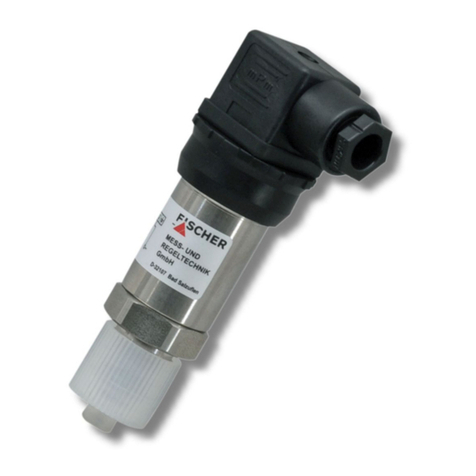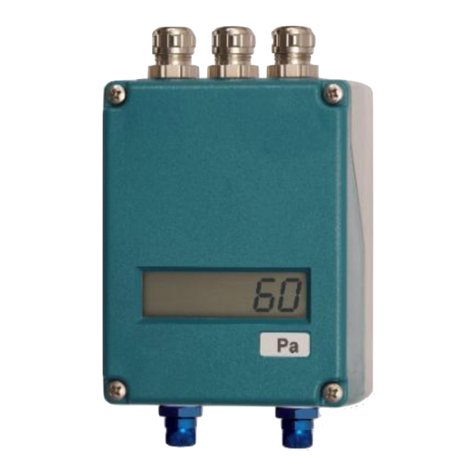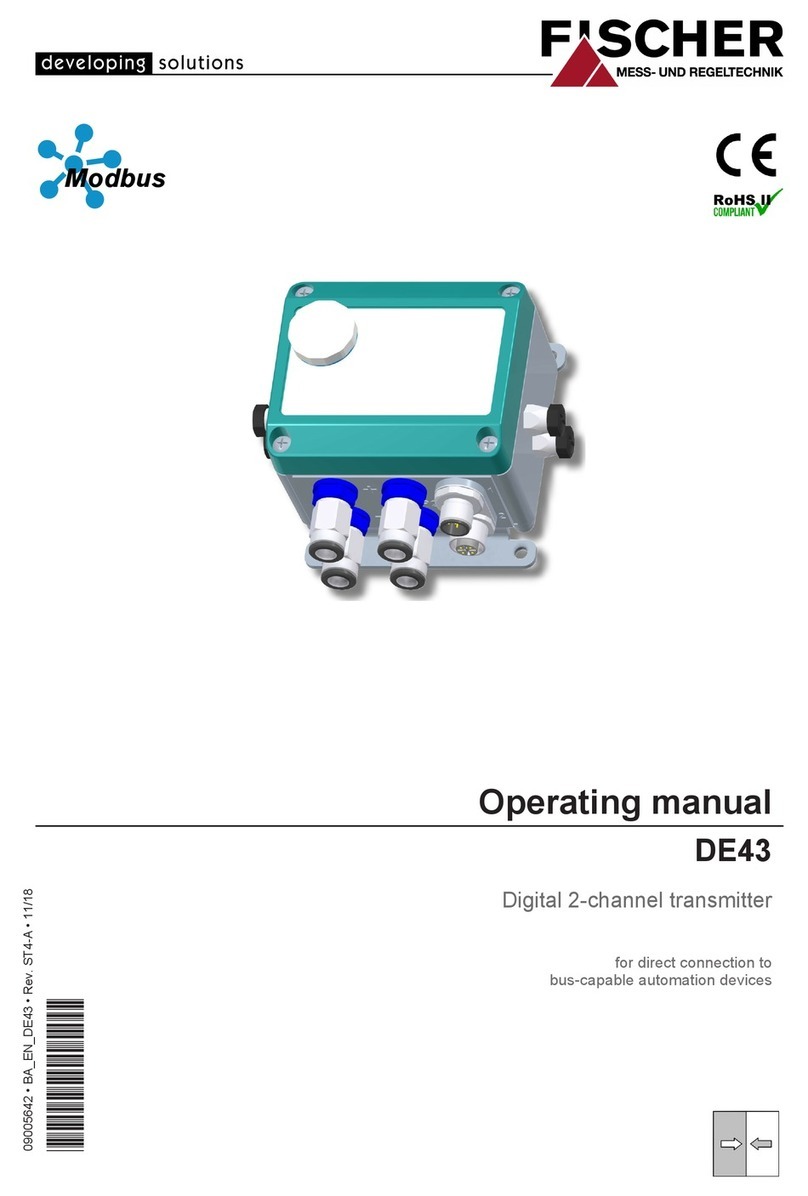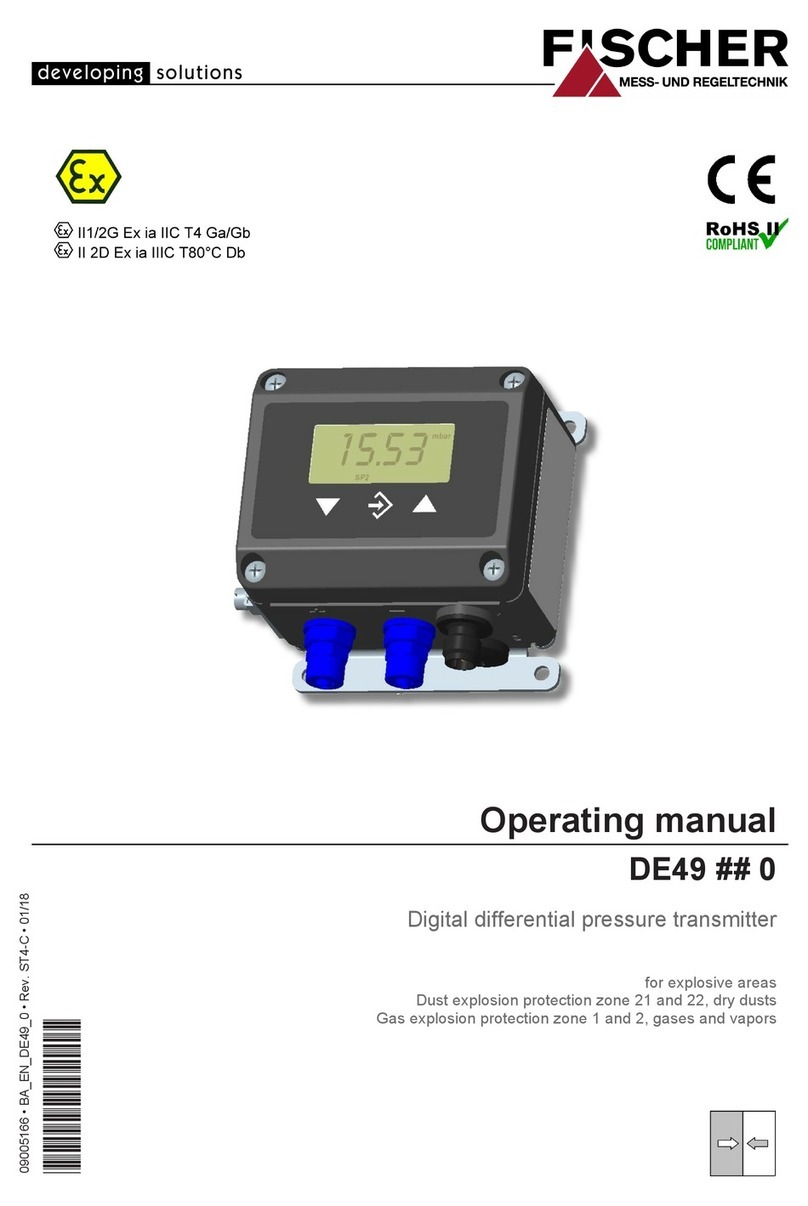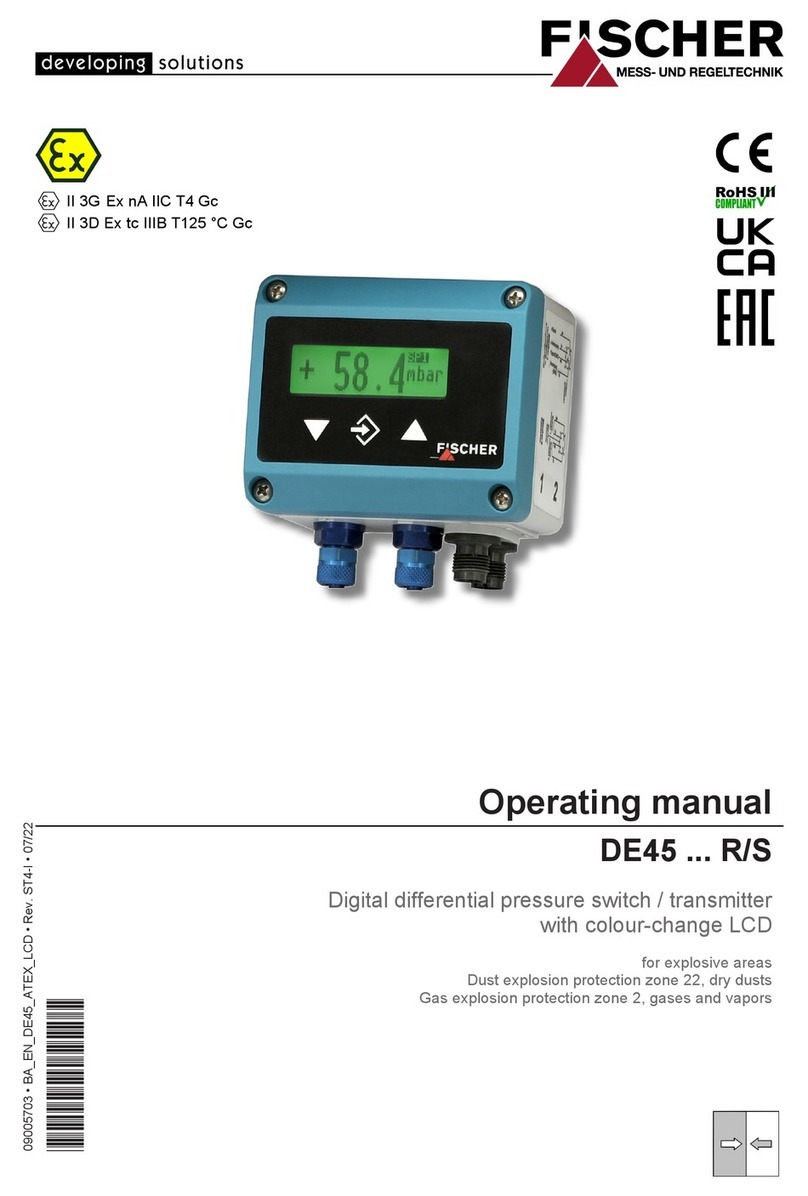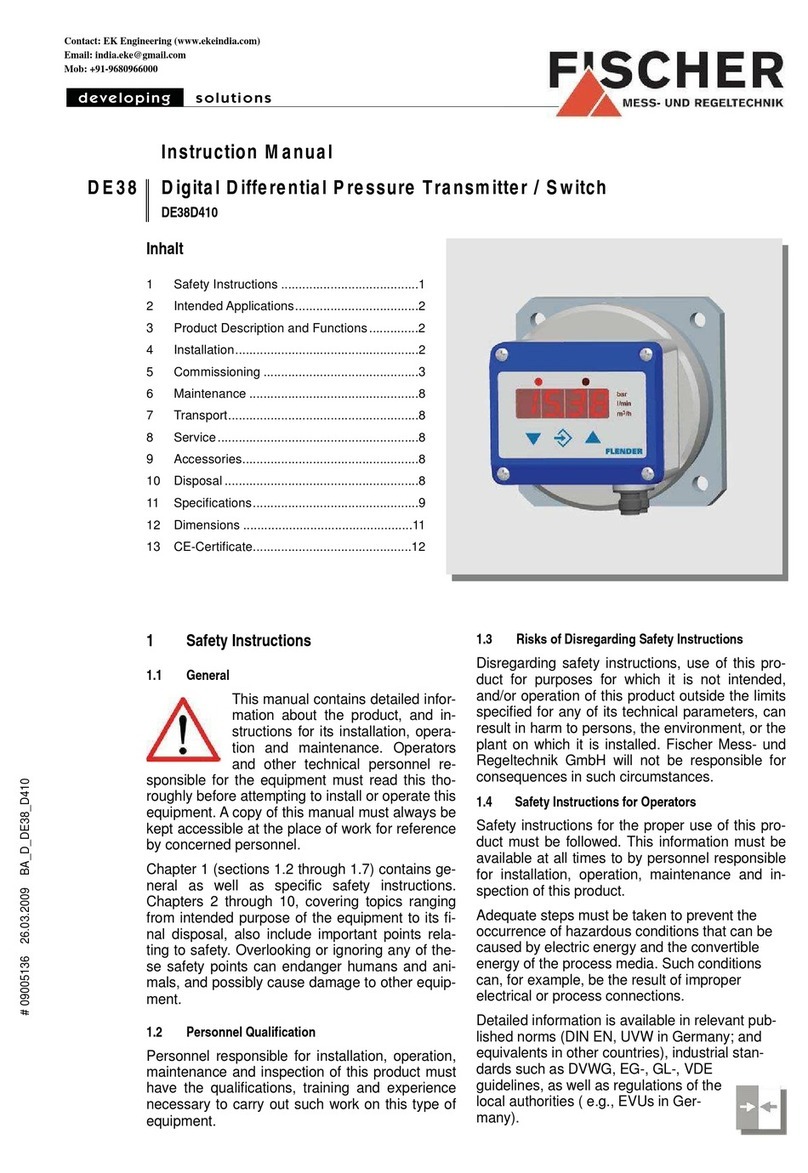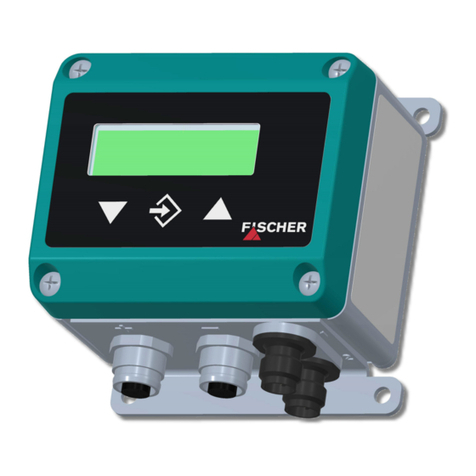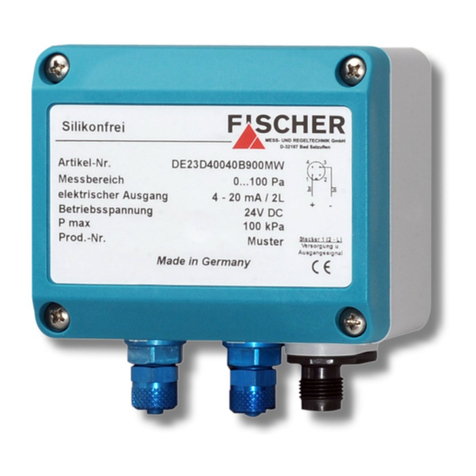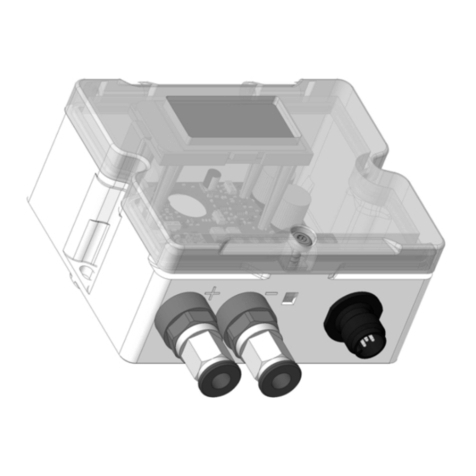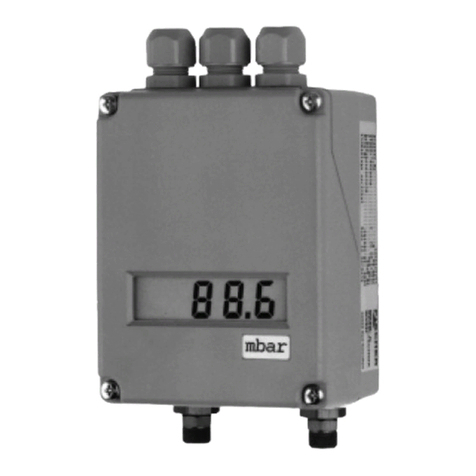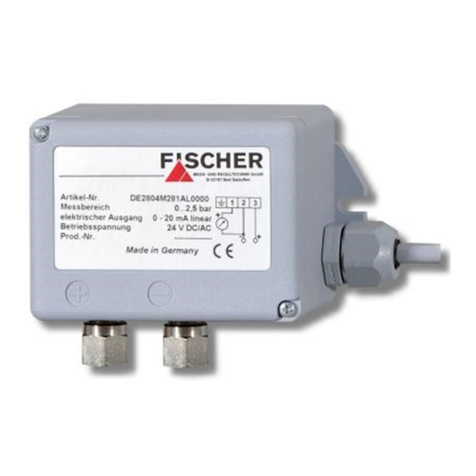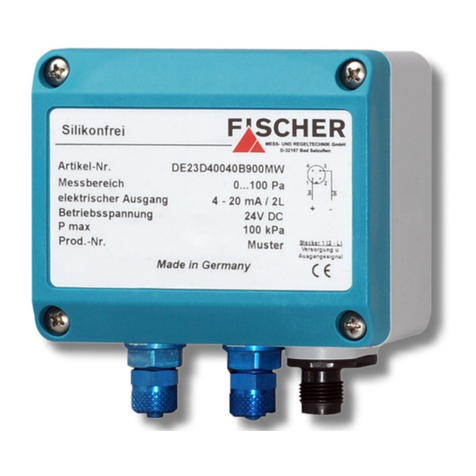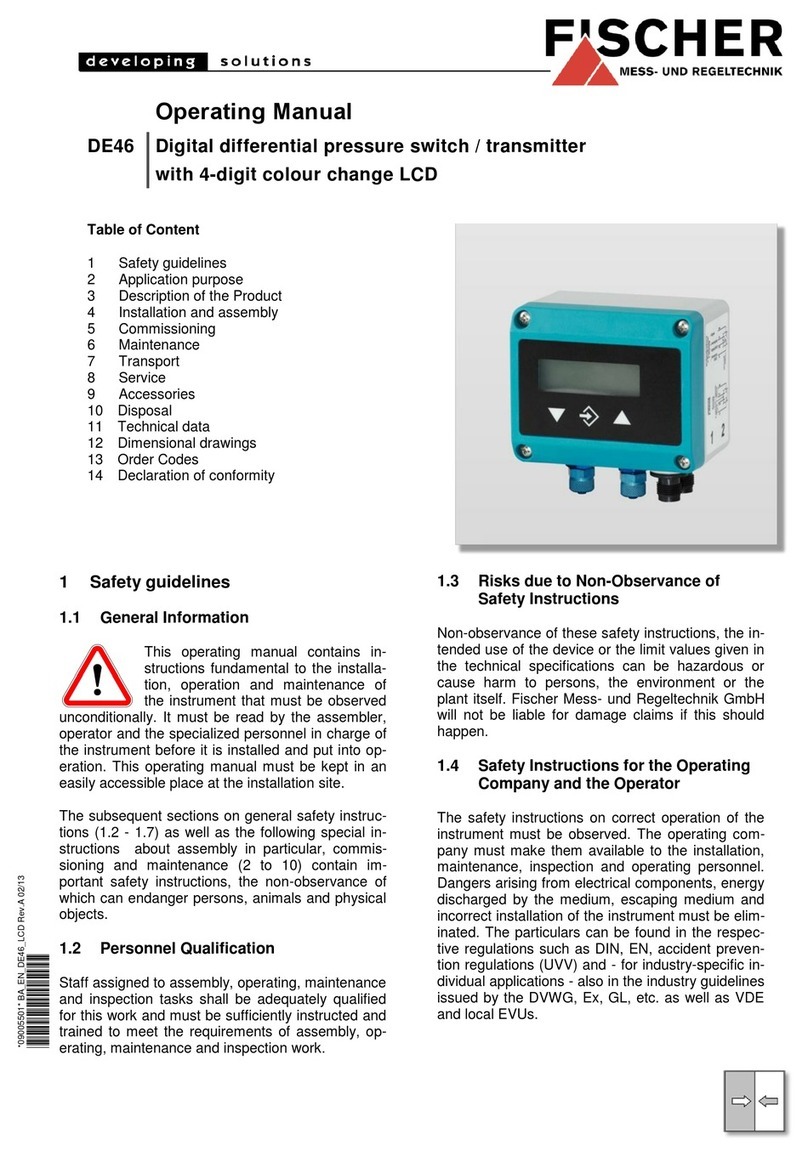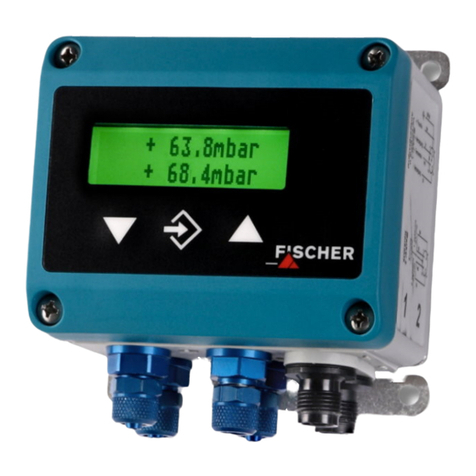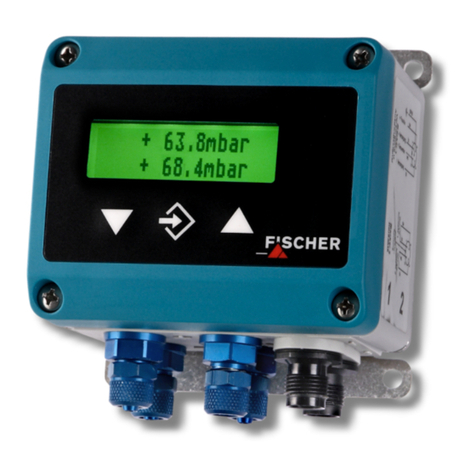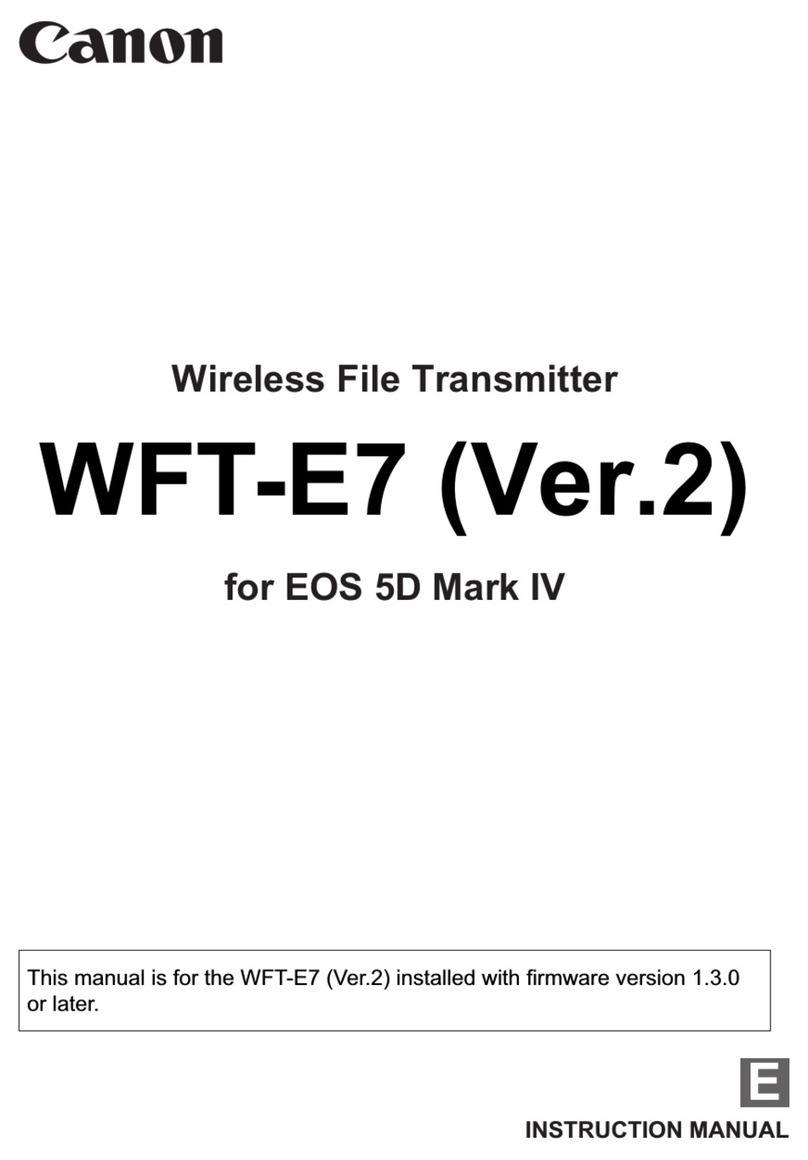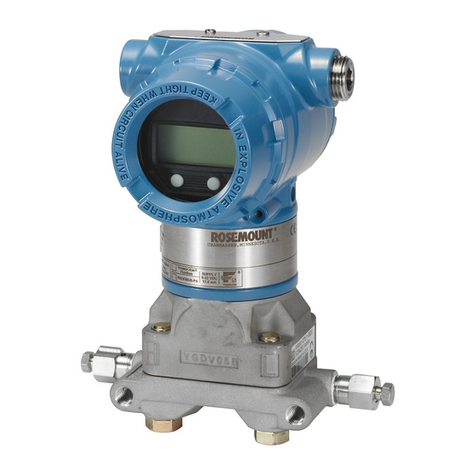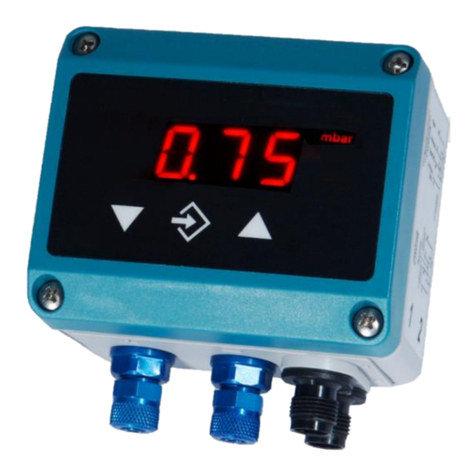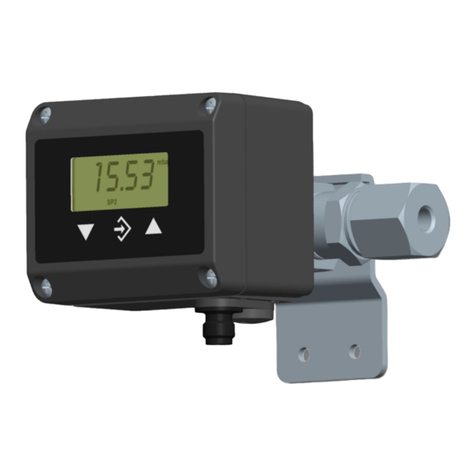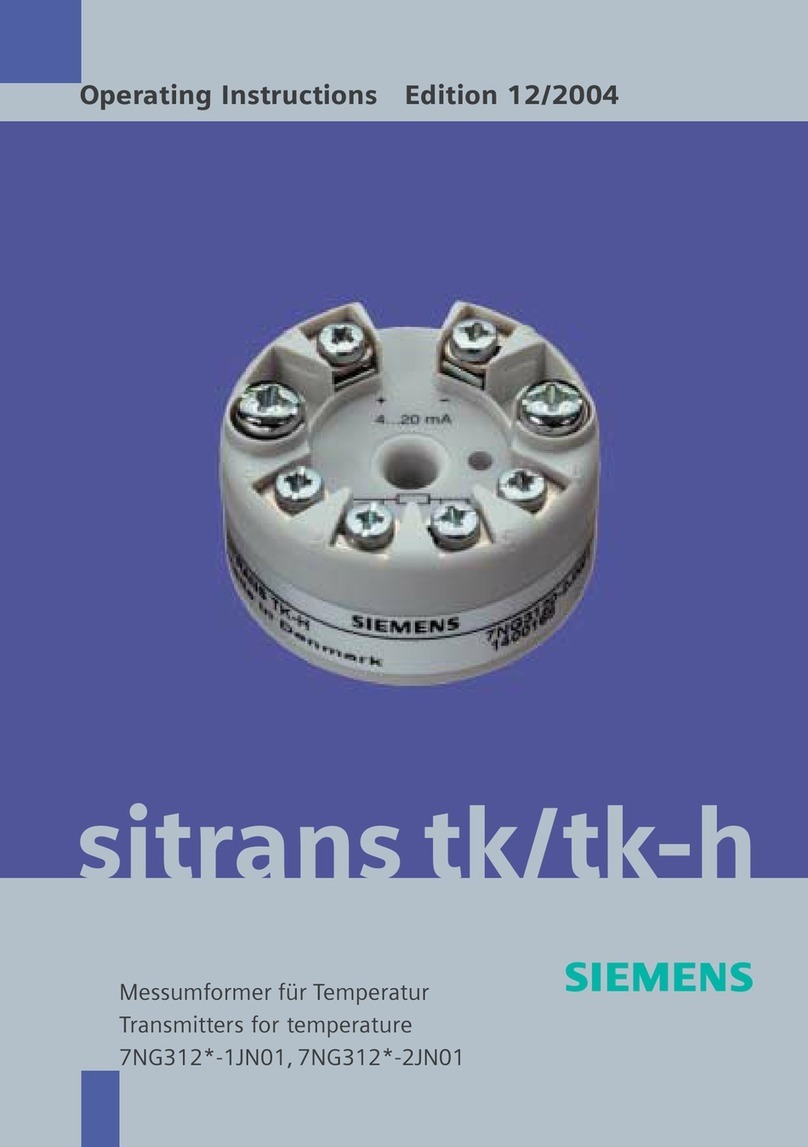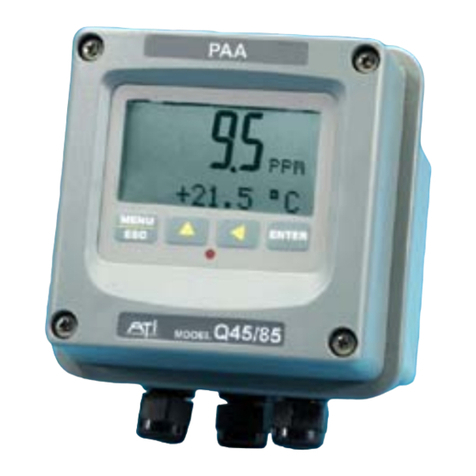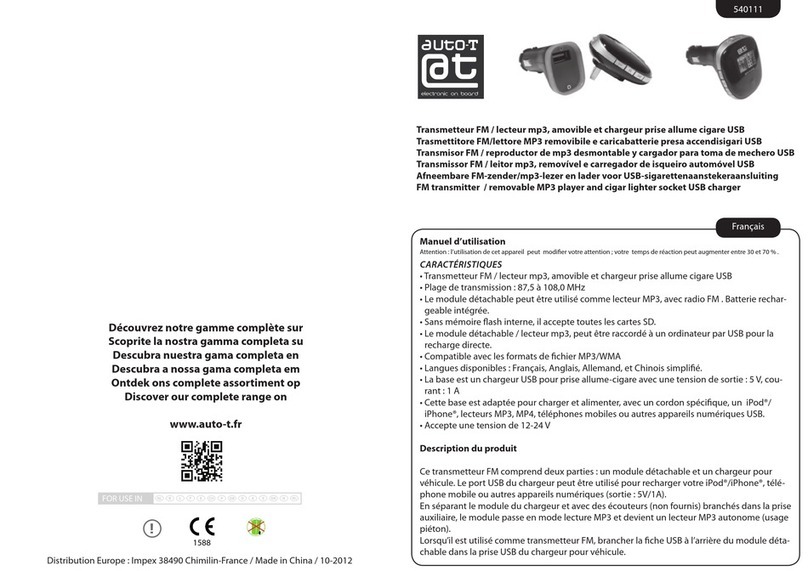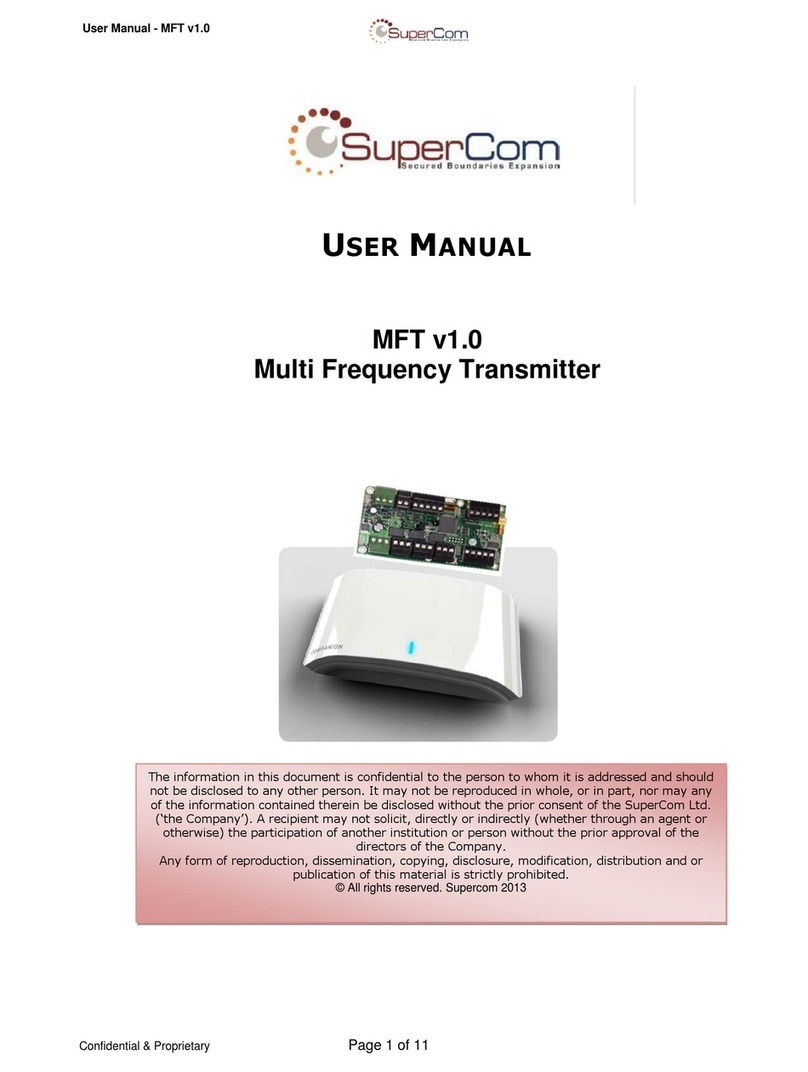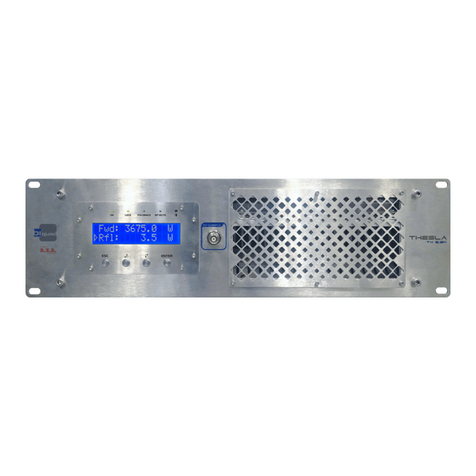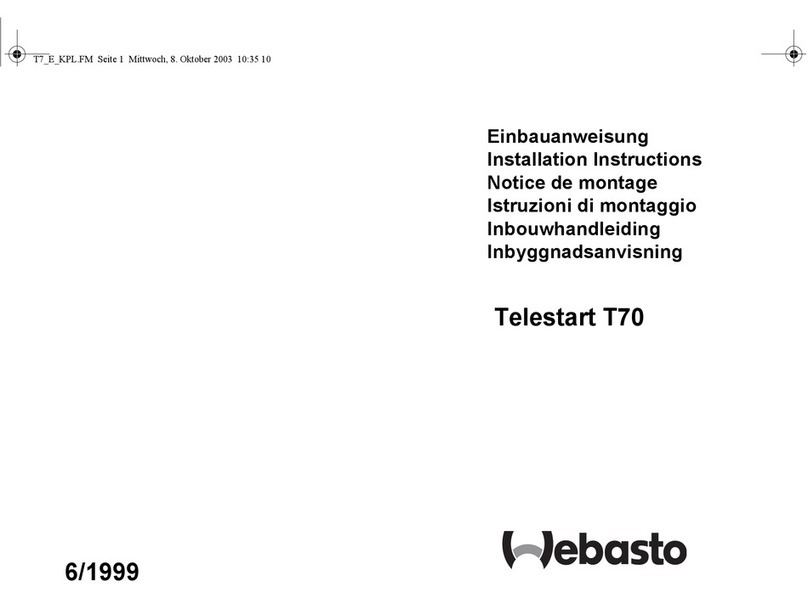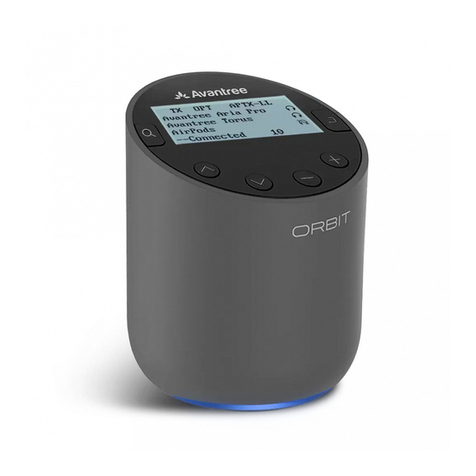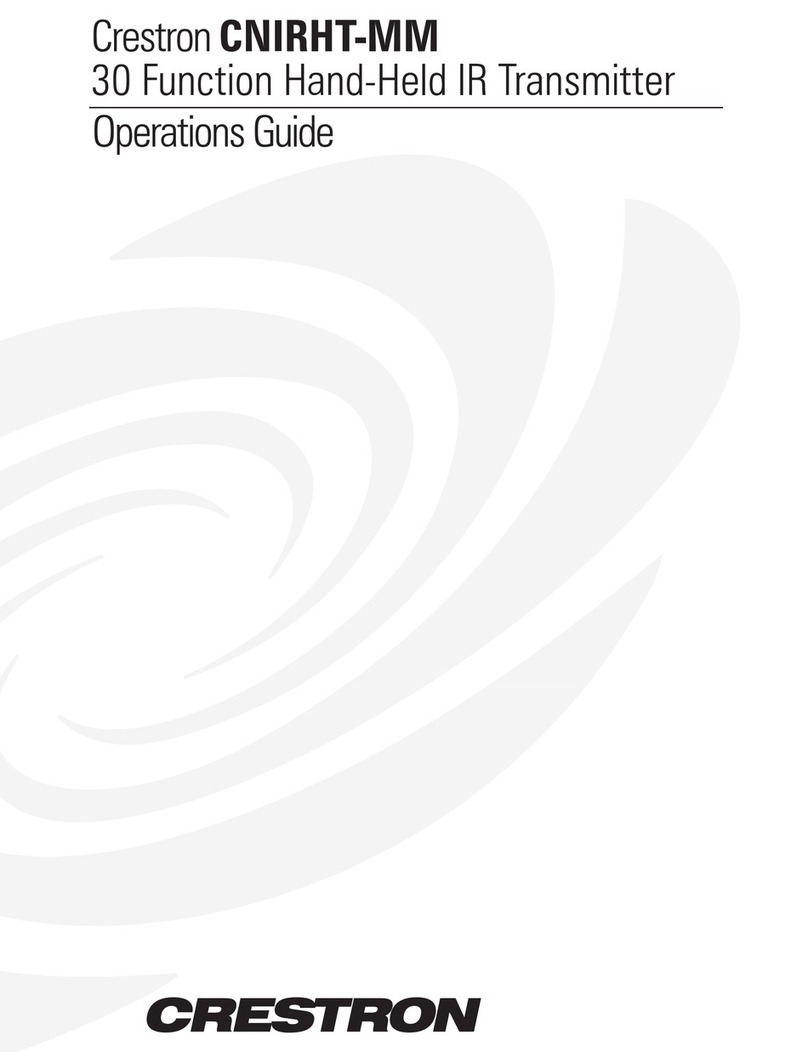
In many cases the unsteady readings are not a
problem in normal mode, but can be a problem in
idle mode, i.e. if one expects a zero (differential)
pressure. In such situations, parameter NP can be
applied. Its value defines a range of measurement
values (same as with the offset) around zero, for
which the measuring value is set to zero. Therefore,
if a value of 0.08 mbar ( 8 Pa) is entered for NP, all
pressures from -0.08 mbar (-8 Pa) to +0.08 mbar
( +8 Pa) become zero. Only if the pressure exceeds
these limits, the reading will not indicate zero any
more. When reaching double the value 0.16 mbar
(16 Pa), the measuring pressure and reading match
again.
5.2.4 Setting the output signal
The transmitter output signal initially depends on
the sensed pressure. However, you have the option
of adjusting the output signal to a large extent to
suit your requirements. The basic measuring range
(indicated on the type label) and the type of output
signal (voltage / current) are not variable.
Parameters MA (start of measuring range) and ME
(End of measuring range) initially define the two
pressures between which the output signal will
change at all. Both values are adjustable across the
entire basic measuring range (e.g. 400 Pa). The set
values always refer to pressure (in the relevant
measuring unit) and are converted when the meas-
uring unit is changed. However, the signal values
(current or voltage) for MA and ME are invariable
(type label, e.g. 0…10 V or 4…20 mA).
If MA is smaller than ME, this is called an increasing
characteristic curve; the output signal increases due
to the increasing pressure. If ME is smaller than MA,
this is a decreasing characteristic curve and the
output signal decreases due to decreasing pres-
sure.
The difference between values MA and ME shall at
least be 25 % of the basic measuring range (in our
example this is 100 Pa). The software does not
provide for greater spreads (you cannot exit the
menu if wrong values were entered for the range).
5.2.5 Output signal limits (Namur)
Regardless of the pressure, the three parameters
oG1, oG2 and oEr define the limit values for currents
or voltages that may not be undercut or exceeded.
The limit values take precedence over the range
defined by MA ... ME!
These parameters primarily serve to suppress error
messages in downstream systems caused by brief
overstepping of measuring ranges. oG1 is only rele-
vant for devices with an output signal 4..20 mA be-
cause here a value below 3.8 mA is often assessed
as an error value. oG2 can be used for all outputs
(voltage and current) to limit the maximum value to
e.g. 10.2 V.
The value defined via the parameter oEr is issued if
the device detects an internal error and can no
longer work correctly. However, not all possible er-
rors and defects can be detected by the device.
If you set oG1 = OG2 = 0, the output signal will no
longer be checked for limits.
If you set oG1 to the maximum value (11 V or 21
mA), you can use OG2 to set the output signal from
zero to the maximum value regardless of the pres-
sure. It is not necessary to quit the menu item, the
output will be adjusted directly. You then operated
the device as a signaller and can easily check fur-
ther signal processing.
5.2.6 Transfer function / characteristic curve
In some applications, measuring pressure is an in-
direct unit for the actual measuring variable. Flow
measurements via a panel or determining the filling
level by means of hydrostatic pressure measure-
ments are two typical examples of this. In these
cases, you might want to change the output signal
of the transmitter to a non-linear characteristic
curve so that the following analysis receives a sig-
nal that is linear-proportional to the actual measur-
ing variable (e.g. volume in m³ or volume flow cm³/s
etc.)
The parameter Fallows you to select between the
following variants:
•0: linear characteristic curve (standard)
•1: square rooted characteristic curve
•2: flat cylindrical tank
•3..30: Support point table with 3 to 30 pairs of
values
The tables of type F= 0 to F= 2 are not visible. In-
ternal values are used here to calculate the table.
These values are invariable.
The following applies for all tables: at MA 0% of the
output signal (i.e. 0 V, 0 mA or 4 mA) is issued and
at ME 100% of the output signal (10 V or 20 mA) is
issued. At F= 3..30 you can only influence the 1..28
interim values. You have access to the star and end
value via the parameters MA and ME. Therefore,
when these values are changed, the table is also
deleted and F= 0 is set!
Whenever you change the value from F,
the program creates a new table. All
previous values in the table are removed
and replaced with new linear entries.
5.2.7 Characteristic curve (F= 3..30)
If the value of Fis greater than or equal to 3, there
is a submenu LIn. here you can access all table val-
ues apart from the table start (MA) and end (ME). This
submenu has its own entry and exit point that is
shown with End. The table is only saved if you return












